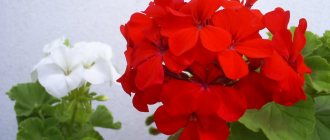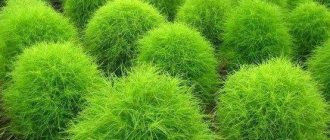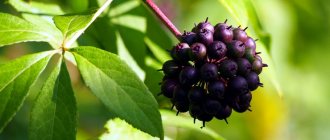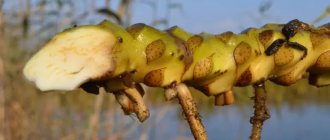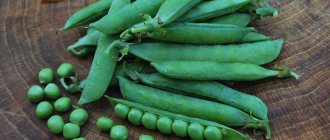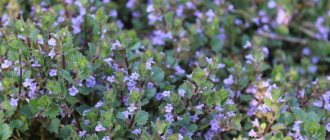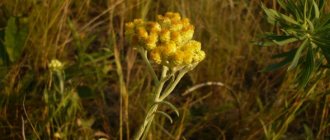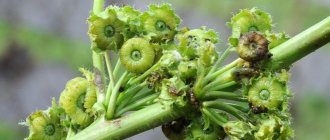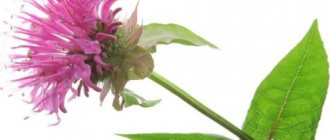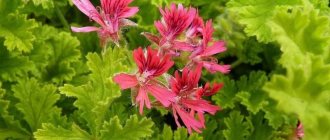Hello dear reader!
Spring is a time of dramatic changes. First of all, the weather. The heat wave that came to us in mid-April, bringing rapid melting of snow, ice drift and the first spring flowers, was replaced by a wave of cold. Strong north wind, night frosts, sometimes snow.
But the growing season of many plants - “hurry plants”, plants - ephemeroids, is very short. And they are in a hurry. Green leaves appeared near the ditch, shaped like small hooves. This spring cleanseed takes advantage of every opportunity to quickly accumulate strength for a new flowering, and for the whole year ahead.
Description of the spring clear
In the wild it grows everywhere, forms thickets or grows in small groups in thickets of bushes, on the forest edge. Most often found along wet river banks and along fences. There are several interesting names for the spring plant - hare cabbage, chicken capillary, spring buttercup.
Low grass reaches a height of no more than thirty centimeters. The stem is short, round, heart-shaped leaves extend from it, which later lengthen and form bulbs in the axils. Depending on the region and weather conditions, it begins to bloom in late April.
The plant is sensitive to the onset of rainy days. The flowers of spring cherry close before rain or at dusk. They gradually fade, become not so bright, and with the onset of long warm days, the above-ground part of the hare cabbage dies off.
Curious facts
There is one legend about the appearance of the spring clear. A wayward merchant's daughter fell in love with a simple guy and wanted to marry him. The father was naturally against it and forbade the lovers to meet. Then the angry girl scattered all her father's money and it turned into clean flowers. Since then, there has been a belief that those who plant or find hare cabbage in the forest will become rich.
The unusual uses did not end there. The ancients were convinced that if cows' roots and bulbs were placed along the walls of the barn, they would produce more fatty milk.
As mentioned above, the plant is able to predict the onset of rainy, cloudy days, and the appearance of the first flowers helped the ancients determine the time of sowing.
Why is the chemical composition useful?
The chemical composition of chistyak is practically not studied. What is reliably known is the presence of protoanemonin.
When dried, it is converted to non-toxic anemonin, which is further hydrolyzed to dicarboxylic acids.
The leaves contain vitamin C or ascorbic acid.
It contains saponins and carotene.
Sugars and starch are found in tubers.
Saponins belong to the organic compounds from the class of glycosides. They are found in many plants. They are used in industry and in the food industry, in particular in the production of halva.
They reduce surface tension and promote foam formation.
Carotene, the pigment that gives plants their orange or yellow color, is an antioxidant. It fights the harmful oxidative effects of free radicals and is essential for maintaining normal vision.
Ascorbic acid also has antioxidant properties. Responsible for strong immunity, participates in the production of collagen.
Benefits and harms
It has been studied very little, so it is not used by official medicine. Only herbalists use young leaves and roots. After some time, the poisonous properties of the plant increase.
Chistyak is known as a plant with a high content of vitamin C, so infusions and decoctions, as well as salads with spring leaves, are an excellent remedy for vitamin deficiency. To replenish the body with vitamins, take juice from fresh grass with whey. The folk remedy has a positive effect on the immune system and cleanses the blood.
Actively used to treat the respiratory system. A decoction or infusion of spring chistyak is an excellent additional remedy for the treatment of chronic bronchitis and tracheitis.
You may also be interested: Nasturtium: description, application, treatment
Sitz baths and poultices combined with chamomile or St. John's wort give positive results in the treatment of hemorrhoids.
The roots or herb of spring grass have long been used by herbalists to treat skin diseases. Used for skin rashes, acne, scrofula. Compresses and poultices speed up the healing of skin damage. Rinsing the mouth with an infusion of leaves treats stomatitis and periodontal disease.
Ointment is a simple folk remedy that relieves the pain of rheumatism and helps get rid of warts and scabies.
Tea made from chistyak leaves is a powerful blood purifier.
Spring cleanser for women - in addition to its blood purifying properties, the plant is useful for any woman due to its absorbent and healing properties. Used for healing the perineum after difficult childbirth, resolving lumps in the chest area, and helps with uterine bleeding.
Growing and caring for the sweet herb stevia
Today, most city residents consume up to 120 (!) grams daily. sugar – including confectionery and sweet drinks. This is at a norm of 50 g.
Such excessive consumption of synthetic (as opposed to natural fruit sugars) sugar in its pure form leads to the development of dental diseases, metabolic disorders, leading to such serious consequences as diabetes, hypertension, atherosclerosis, obesity, kidney diseases, skin diseases, and neurological disorders.
What should sweet lovers do? Fortunately, nature has a natural sweetener - the sweet herb stevia, which can be grown from seeds in a garden plot, in a country house, and even at home, on a balcony or in a flowerpot on a windowsill.
Description and amazing properties of stevia
This amazing plant was discovered for Europeans by botanist Antonio Bertoni in Paraguay. Local Indians have long used this herb to make sweet drinks. They called it Guarani.
Surprisingly, in order to make a large cup of tea sweet, it is enough to add 2-3 small leaves of this herb. This perennial herbaceous plant belongs to the Asteraceae family. Grows in all tropical regions of South America.
More than 20 thousand species are already known, and every year scientists discover new ones.
French scientists Lavelle and Prided took a long time to unravel the mystery of stevia's sweetness and isolated a new substance, stevioside, which is almost 400 times sweeter than sugar, but does not have such a harmful effect as synthetic glucose or artificial sweeteners.
That is why this plant is also called honey grass.
The beneficial properties and advantages of this herb can be listed for a long time - the most important of them are:
- Stevia glycosides, on the contrary, are very beneficial substances for the body: they normalize metabolic processes, remove toxins and have a very beneficial effect on the cardiovascular and respiratory systems.
- Today, stevia is classified as a very effective medicinal plant and is used to cleanse blood vessels of cholesterol, reduce sugar levels (it can be safely used by diabetics), as well as general health and rejuvenation of the body.
- Stevia also has antibacterial properties - its leaves and juice are used in the treatment of ulcers, wounds, and suppurations.
- Chewing the leaves heals gum inflammation, gumboils, and periodontal disease. By the way, extract of this herb is added to many toothpastes, powders and chewing gums.
- And a few more arguments - in Japan, stevia is grown on an industrial scale, and it is classified as a strategic raw material, and the US Army has completely abandoned the use of sugar and replaced it with stevia extract.
- Chinese medicine included this herb in the list of officially confirmed means for prolonging human life, and at the World Symposium stevia received a gold prize.
We are sure that you already want to grow this miracle herb from seeds yourself. How to do this is detailed below, especially since caring for it does not present any difficulties.
Secrets of growing stevia
This beautiful and useful plant can be grown both in open ground and at home; care differs little.
Initially, you need to keep in mind that this plant is tropical and does not overwinter here - you must either move it into the house, greenhouse in flowerpots, or the bush will freeze.
The most important condition is good lighting and sufficient heat. Without this, stevia will grow sluggishly, and the amount of accumulated sweetness will decrease sharply.
The optimal place at home is windows facing south and southwest. At the dacha, in open ground, the beds should be oriented from north to south and should be placed on the western and southern slopes - this makes caring for the plant much easier.
There are two ways to propagate stevia: from seeds and cuttings. The second method is used when only one bush is brought indoors for the winter, and the rest die in the open ground.
If you decide to grow stevia in the house or on the balcony, then the pot should be at least 2 liters in volume, and be sure to provide 2 cm of drainage - best from broken shards. The optimal soil composition is: 50% peat compost with the addition of a quarter of regular garden soil and coarse sand.
Initially, the pot should be filled only halfway, the cuttings or seedlings grown from seeds should be planted, and then soil will need to be added as the bush grows.
When the planted plant grows and reaches 20 cm in height, it is imperative to trim the central stem at a height of about 5 cm from the top, and always in the middle of the internode. This will cause active tillering and an increase in the stevia crown and the number of leaves. This cut top can be used as a cutting and rooted.
Growing stevia from seeds should be started by sowing in April in disposable cups. The seeds germinate quickly, and after 1.5 months the seedlings can be planted in a permanent place.
Caring for stevia is no different from standard care for other indoor plants - timely watering, quite often, avoiding drying out the clod of earth. Overmoistening is no less dangerous - the roots quickly rot and the flower dies. This grass loves spraying.
Care indoors and outdoors
Growing stevia assumes that subsequent care at home consists of forming a bush, when every 5-6 months each shoot is shortened by half or by a third (small branches).
There should be at least 3 pairs of leaves left. New shoots will immediately begin to grow from dormant buds. It is recommended to treat the wounds after pruning with pork fat or garden varnish - this way the plants will survive the injuries painlessly.
After pruning, care includes the following mandatory operation: you need to make a greenhouse out of a plastic jar or plastic bag for several days and remove the pot from direct sunlight. If stevia is not pruned, it will become very elongated and the yield of leaves will decrease.
When the young branches begin to grow, the jar is gradually removed for several hours. Pots are also not taken out into the open air immediately, but are first accustomed to the sun in partial shade, otherwise there will be burns on the leaves.
In the summer, you can plant them from pots in garden beds at your dacha or simply dig in the containers.
Stevia can be grown in the ground until September, and when night temperatures drop to +10, the plant should be returned to the windowsill or cuttings collected.
When replanting bushes, you must try to preserve the roots and earthen ball as much as possible, otherwise the plant will take a long time to recover from stress.
Useful tips
- Experienced gardeners advise lighting stevia in winter - then the leaves will be as sweet as in summer.
- Another tip is to renew the bushes by cuttings every 3-4 years. This way the plant receives new soil and young growth power.
- The third observation is that stevia responds better to watering with boiled water than raw water.
- The optimal temperature is from 22 to 28 degrees.
- It is best to grow in beds where legumes used to grow.
- Collect leaves as needed, primarily those with curled edges. In general, the leaves ripen already at 3 months - they become brittle. They must be picked off without keeping them on the bush for more than 4-5 months. Dry the leaves and use them fresh, storing them in the refrigerator.
Use in folk medicine
Sweet healing infusion. Pour 1 teaspoon of powder from dry stevia leaves into a glass of boiling water and keep in a water bath (or in a thermos) for 15-20 minutes, then strain and drink for stomach diseases and obesity. You can also apply it to non-healing wounds and rinse the mouth for gingivitis and sore throats.
Tea. Pour 200 ml of boiling water over a third of a teaspoon of stevia leaves and leave for 1 minute. Add a slice of lemon or a mint leaf and drink to your heart's content.
It is recommended to sprinkle boils on the body with dry stevia powder for half an hour, and then rinse with warm water. The infusion is also rubbed into the scalp to strengthen the hair and steam masks are made with a towel soaked in the hot infusion to smooth out wrinkles.
Source: https://LetovSadu.ru/neobychnye-rasteniya/kak-vyrashhivat-steviyu-v-domashnix-usloviyax.html
Folk recipes
Infusion of the aerial part for external use
1 tbsp spoon for 250 ml of boiling water. Brew, close tightly, strain after an hour. Used to treat inflammatory diseases of the oral cavity, acne, rashes, wounds.
Cleaner for hemorrhoids
2 tbsp. finely chopped herbs, 500 ml boiling water. Wrap it warmly in a woolen scarf and leave for 4 hours. Used for lotions on hemorrhoidal cones.
Sitz baths - 3 tbsp. Chamomile flowers and hare cabbage are brewed with half a liter of boiling water and left for an hour.
Herbal decoction
Brew two tablespoons of chistyak with two glasses of boiled water, keep in a steam bath for an hour, let cool under the lid, and strain. When taken orally, the folk remedy helps against cough, treats scrofula, and constipation. Compresses and lotions help with skin diseases.
Serum decoction
A tablespoon of finely chopped roots, leaves or a mixture of them is poured into a glass of whey and boiled over low heat for an hour. Take a tablespoon.
Ointment
Popular as an anti-inflammatory and healing agent. To prepare, dry leaves are crushed to obtain a fine powder, sifted through a sieve with the smallest mesh and combined with a fatty base.
Cleansing decoction
3 hours spoon Heat 100 ml of boiling water over a fire until it begins to boil. As soon as the liquid begins to boil, remove from the heat and let stand for an hour. Take a couple of sips two or three times a day or use externally to treat the skin.
Growing
Chistyak is planted not only to obtain medicinal raw materials, but also as an ornamental plant. If it is important for you that the perennial is beautiful, then choose the varieties “Guinea Gold” or “Glory”. It’s worth clarifying right away that propagation is carried out exclusively by the rhizome, so it is better to purchase a segment of the root system rather than seeds, which may simply not sprout.
For planting, you should choose a wet area, but not a swamp. The nutritional value of the substrate does not matter, but it is worth considering the structure of the soil. The perennial will not grow well on sandstones and loams. In the first case, it will not have enough moisture, in the second - oxygen for the root system.
Grow sage, fieldfare and St. John's wort at home.
Plant the chistya in rows, between which there should be at least 25 cm, so as not to get a very thick planting. It is best to plant the plant in early spring, however, if your region experiences severe frosts in early spring, it is better to postpone planting until the end of April-May. As for pests and diseases, in terms of “survivability” the chickweed is comparable to weeds. This means that he is not sick with anything, and only in rare cases is he affected by pests.
Did you know? 100 g of leaves contain about 190 mg of vitamin C. The daily requirement of an adult is from 60 to 100 mg. Tangerine, for example, contains only 38 mg of vitamin C per 100 g of product.
Economic importance and application
In medicine
The roots and leaves are used for medicinal purposes. Roots are harvested in early April and September, leaves - in April - May. The plant has a diuretic, anti-inflammatory, mild laxative, analgesic, wound-healing effect and the property of thinning thick sputum when coughing. A decoction of roots and leaves is used against scurvy, hemorrhoids, warts, scabies, and also as a laxative.
Young fresh leaves are used as a spring vitamin “blood purifying” salad and added to soups. The tubers can be eaten before flowering and during flowering. Tubers and roots collected after the fruits ripen are poisonous and therefore are not recommended for medicinal purposes.
Literature
- Atlas of wild plants of the Leningrad region. - M.: Partnership of Scientific Publications, 2010. - P. 244
- Elenevsky A. G., Radygina V. I., Bulany Yu. I.
Plants of the Saratov Right Bank (flora summary). - Saratov: Publishing house Sarat. pedin-ta, 2000. - ISBN 5-87077-047-5. — P. 32 - Lavrenova G.V., Lavrenov V.K.
Encyclopedia of medicinal plants. Volume 2. - Donetsk: Donechchina, 1997. - P. 364-365 - Herbaceous plants of the USSR / Yu. E. Alekseev, V. N. Vekhov, G. P. Gapochka, Yu. K. Dundin, V. N. Pavlov, V. N. Tikhomirov, V. R. Filin. - T. 1. - M.: Mysl, 1971. - P. 397
- Flora of Moscow / Varlygina T.I., Golovkin B.N., Kiseleva K.V., etc. - M.: Golden-Bi, 2007. - P. 276-278
Ranunculaceae family Ranunculaceae.
Common names:
oily color, early lettuce, poisonous leaf, toadgrass, millet, millet, hare's lettuce, hare's lettuce, chickweed, courgette.
Parts used:
fresh grass.
Pharmacy name:
chistyak grass - Ranunculi ficariae herba.
Botanical description.
This is one of the most noticeable spring plants. In early spring, leaves of a basal rosette with a wide sheath, heart-shaped or kidney-shaped, serrated or jagged along the edges, juicy, with an oily shiny surface, develop from fleshy pineal tubers. Sometimes they spread out over the surface of the soil like a whole carpet. The weakly branched stem bears larger leaves, similar to the basal ones. The flowers are located at the ends of the stems, solitary, similar to bright yellow stars, the upper side of the petals is oily and shiny. In the axils of the upper leaves, brood nodules (they look like wheat grains) are often formed, which serve for vegetative propagation. As they mature, they fall off and develop into new young plants. Sometimes there are so many of these white nodules that when the soil is washed away by spring rains, it seems as if wheat has been sown in some areas.
Active ingredients.
Caustic substances characteristic of buttercups - protoanemonin and, accordingly, anemonin - are contained in small quantities in the chistyak. But it contains vitamin C and saponins.
Healing action and application.
Due to the fact that chistyak is one of the first spring plants containing vitamin C, it has long been used as a so-called blood-purifying spring salad. The plant has a diuretic, anti-inflammatory, mild laxative, analgesic, wound-healing effect and the property of thinning thick sputum when coughing. A decoction of roots and leaves is used against scurvy, hemorrhoids, warts, scabies, and also as a laxative. The crushed leaves are mixed with butter and the prepared ointment is applied to hemorrhoids. A decoction of the herbs is used to rinse the mouth for gingivitis, stomatitis and to wash wounds and ulcers.
Use in folk medicine.
In spring, fresh chistyaka grass is used in folk medicine as a salad to replenish vitamin C deficiency, or the juice is squeezed out of it, which is then mixed with milk and taken with spoons. In folk medicine, chistyak also plays an important role as an independent medicine during courses of treatment to cleanse the blood. Tea from the dried plant is given against skin diseases. In folk medicine of Belarus, spring chistak is used as follows: the plant is crushed, mixed with lard and the ointment is applied to the place where the snake has bitten.
Chistyak tea: 2-3 teaspoons of chistyak herb are poured into 1/4 liter of water, heated slowly, brought to a boil and filtered.
This tea is drunk several sips throughout the day to cleanse the skin, and warm baths are also made for individual areas of the skin, diluting it with the same amount of chamomile tea. This combination also helps with hemorrhoids (sitz baths).
Side effects.
Since the fresh plant contains some of the caustic substances characteristic of buttercups, avoid overdose, otherwise irritation of the stomach, intestines and kidneys may occur. Chistyak tea is less dangerous because when dried, caustic substances are destroyed and become harmless.
The bright flowers of the spring chistyak plant always attract attention - and all because they appear in the very early spring, and its bright sunny inflorescences resemble the spring sun. All about spring clearing: features, photos, medicinal properties.
Collection and preparation
The optimal time to start preparing medicinal raw materials is the beginning and peak of the flowering phase. After flowering is completed, the plant accumulates toxic substances in maximum concentration. Therefore, if the deadline is missed, it is better to wait until next year, because the raw materials obtained after flowering can be hazardous to health.
There are only five rules for collecting and harvesting.
- Collection should be carried out in sunny weather, when the dew has dried on the grass.
- You can cut off only the top part of the plant, you can tear it out with the root. If you are collecting with the root, then you need to select only mature specimens and leave 2-3 plants per square meter.
- After harvesting, the tubers must be washed and dried separately.
- The greens are cut into small pieces and dried on a spread sheet of parchment, away from direct sunlight.
- Raw materials are stored for 1-1.5 years. But you need to create favorable conditions - normal humidity, sealed containers, optimal air temperature not lower than +7, but not higher than +28 degrees.
The medicinal herb loses its properties much earlier if it is stored in a woven bag. Firstly, the fabric absorbs some of the nutrients, and secondly, a significant amount simply evaporates. In addition, with such storage it is quite difficult to protect medicinal raw materials from dampness, mold, and foreign odors.
